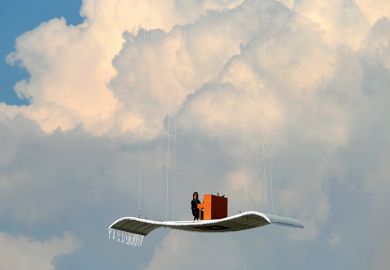Food has always been a true social indicator: while the poor ate dairy, the affluent sampled more exotic fare, finds Jules Pretty
In John Steinbeck's 1930s tragedy Of Mice and Men , George and Lennie make some sort of living as itinerant farm hands. They have a secret dream, an idea about food, land and freedom. Lennie begs George to "tell about how it's gonna be", and George says: "We could have a few pigs. I could build a small smoke house like the one gran'pa had, an' when we kill a pig we can smoke the bacon and the hams. An' when the salmon run up river we could catch a hundred of 'em an' salt 'em down or smoke 'em... When the fruits come in we could can it - and tomatoes... We'd jus' live there. We'd belong there." Lennie whispers softly: "We could live offa the fatta the lan." But Crooks the horseman is scornful: "Ever'body wants a little piece of lan'I nobody never gets to heaven, and nobody gets no land."
The fat of the land, with its peace and bounty, is no more than a distant dream of freedom for these boys. Today, so much has changed. We now consume such an abundance of calories that dietary ill-health, combined with sedentary lifestyles, has become a leading cause of illness. Consider this: 25 years ago, 6 per cent of the adult population of the UK was obese; today it is 22 per cent. Across the US, it is 25-30 per cent, and well above 30 per cent in the poor states of Louisiana, Mississippi and West Virginia. We consume food every day (or at least hope to), and our consumption patterns shape landscapes, farms and whole cultures.
We vote by eating. Yet our choices are not made with free will. We would like to think that they are - but that is a mistake. Americans, for example, spend $100 billion (£51 billion) on fast food annually, and companies spend $34 billion on advertising to persuade consumers to eat their products. Today's half-hour TV programmes in the US are four minutes shorter than a generation ago, to leave space for more advertisements, many of which are for food. Our choices are shaped by many local to global cultural influences: the quality of the soil, farm technology, hedgerow provenance, food advertisers and the global food trade. Sometimes we think our current problems are new ones. But it takes two fine medieval historians to remind us not to slip into temporal exceptionalism. It is not so unique today. Similar pressures and influences have occurred before.
This is one reason why these two splendid books should be read by anyone with an interest in food, farming, the environment and what it is to be human.
Massimo Montanari's Food is Culture is a short, poignant and perceptive series of essays on the nature of past and present food systems. Joan Thirsk, known as one of Britain's finest agricultural historians, has here focused on Food in Early Modern England . Sit back, dip in and enjoy these feasts of evidence and storytelling.
One theme is common to both books. Food is differentiated, and its culture is an emergent property of place and people. Beware of thin people, says Montanari, as he quotes Shakespeare and recalls past slimming diets (ineffective then, too), and how the better-off ate more, not because they wished to get rid of hunger but to show status by body size. Tell me how much you eat and I'll tell you who you are, says Montanari. To be fat was once a sign of wealth and wellbeing. The prosperous bourgeoisie of Florence, for example, called themselves the popolo grasso (fat populace) to celebrate their own economic and political triumph.
In the 1660s, at the same time as there was an active search for hunger-suppressing food, records Thirsk, quantities on the table were expected to be large, so as to express the hospitality of hosts. We all know of the excessive feasts of the very rich, but Thirsk reveals new perspectives on the diets of other social groups. Those who lived in or near ports had access to exotic foods from far overseas; those in rural areas regularly ate dairy produce, which was dubbed the food of the poor by the urban elite. In the early 1600s, there was a fashion for breeding quails and lapwings. Now, of course, we would never dream of eating a lapwing, not least because they have become rather rare. By the early 1700s, many wild birds were raised and fattened, including wheatears, godwits, knots, ruffs, curlews, blackbirds, thrushes, as well as the more expected pheasants and partridges.
Montanari also tells of the hidden language of food, in which it is so much more than calories, nutrients and vitamins. The story is important, and it always carries elements of power and social prestige. Food etiquette is also important. It brings people together, such as at the family meal, or it can be used to divide - where to place guests at the table has always been important, especially in the complex geography of any formal banquet. A seat is not to be assigned at random.
New foods and drinks have the potential to revolutionise social relationships. Both authors describe how coffee and chocolate swept across societies in Europe, replacing existing drinks as they became more fashionable - not so very different from the coffee shops of the 1950s and 1960s and the later emergence of a certain Seattle-based coffee franchise that crafted its own language of lattes and grandes, and that can be found in almost every city of the world, it seems. Foods were different, too.
Carrots around 1600 were described as aromatic and spicy (compare with those you eat today, suggests Thirsk). Foods were linked to locales and were therefore fresher, with more subtleties of flavours. As today's foods have become commodities, increasingly standardised and similar from place to place, so we appear to have lost something special.
The rhythms of food are also partly the rhythms of life, writes Montanari.
But both authors again say something new. Universalism may not last.
Distinctive and differentiated foods are important because they are symbolic of place and people, and thus food will tend towards diversity and also change over time. Junk food, too, will one day disappear. George and Lennie were physically active, ate moderately, but could only dream of pork, salmon and tomatoes. Today, we have access to all the food luxuries we want, but can only dream of lifestyles that would keep us well.
Jules Pretty is professor of environment and society at the University of Essex.
Food is Culture
Author - Massimo Montanari
Publisher - Columbia University Press
Pages - 149
Price - £14.50
ISBN - 0 231 13790 7
Register to continue
Why register?
- Registration is free and only takes a moment
- Once registered, you can read 3 articles a month
- Sign up for our newsletter
Subscribe
Or subscribe for unlimited access to:
- Unlimited access to news, views, insights & reviews
- Digital editions
- Digital access to THE’s university and college rankings analysis
Already registered or a current subscriber? Login



